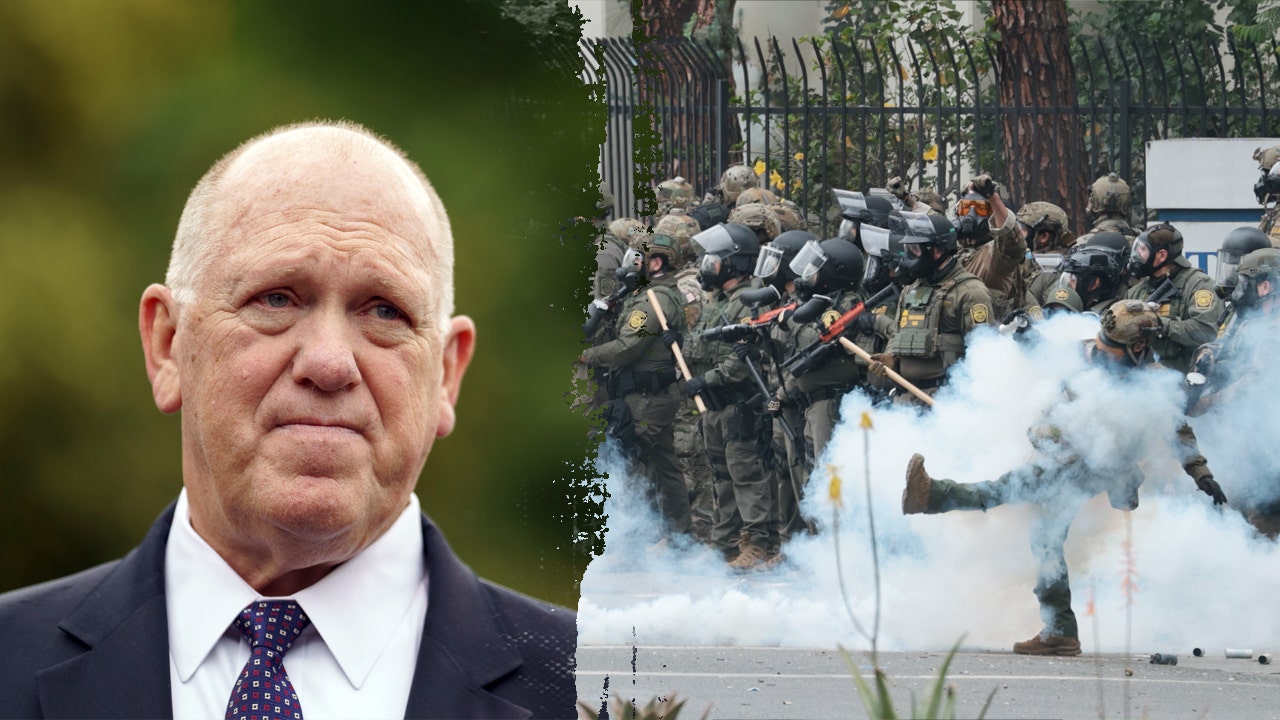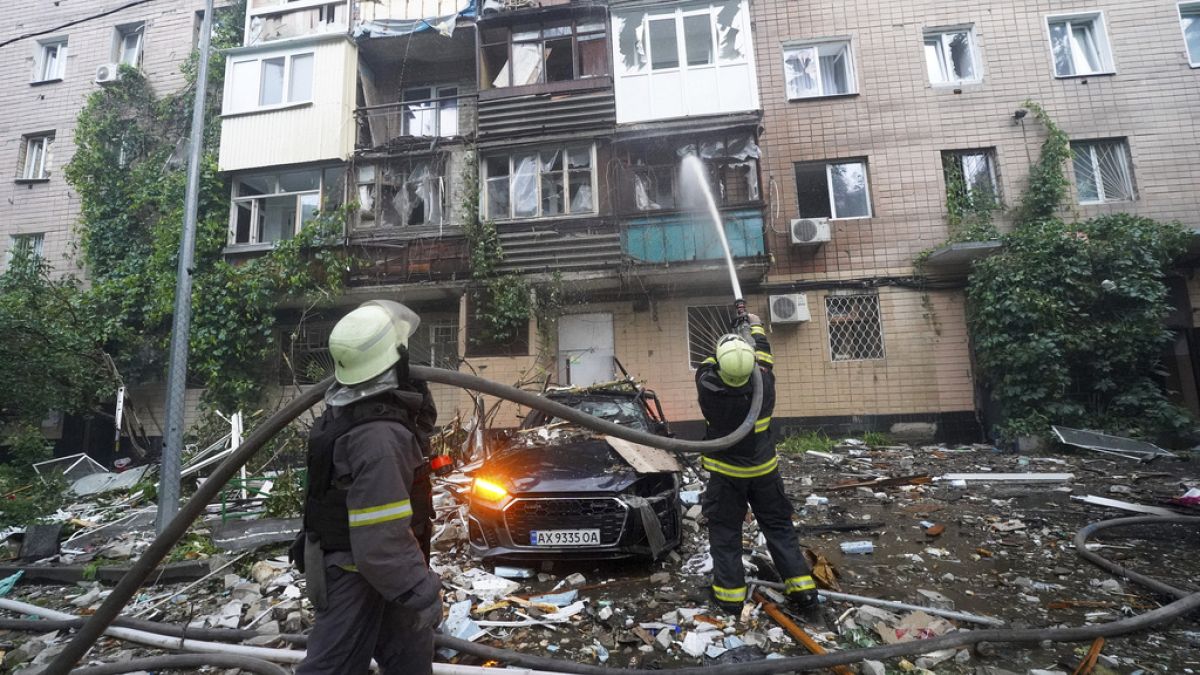Massachusetts
Sewage can overflow into Mass. waterways when it rains. Fixing the problem isn’t cheap

Like many days this past summer, it poured on Aug. 8. The rain came hard and fast across eastern Massachusetts that morning, dumping several inches within a relatively short period of time.
From the kitchen window of his home in Arlington, David Stoff watched as the water in the Alewife Brook began to flood parts of the Alewife Greenway, a popular dirt path that abuts his backyard.
“There was just a big pool of really milky, gray sewage water,” he said.
That’s right, there was raw sewage in the water.
Stoff lives downstream from two combined sewer overflows.
Combined sewer overflows — better known as CSOs — are relics from the mid-19th century, a time when cities built sewer infrastructure differently. In modern sewer systems, anything you flush down the toilet or pour down the sink flows through one set of pipes to a treatment facility like Deer Island. Stormwater runoff, meanwhile, drains into catch basins on the street flows through a different set of pipes and usually ends up in a nearby water body.
In a combined system, stormwater runoff and sewage flow through the same pipe to a treatment plant. Most of the time, this system works just fine. But during heavy or even moderate rainstorms, the pipes get overwhelmed. Instead of letting sewage back up into homes, the system is designed to overflow through specific pipes known as outfalls into rivers, streams or other waterways.
No one builds CSOs anymore and no one wants the ones that exist. But eliminating them is a complicated and expensive engineering challenge — a challenge that will only become more urgent as climate change continues to fuel the sort of sudden, heavy storms that trigger CSO overflows.
As the sun came out on that August day and joggers, dog-walkers and other commuters once again filled the Greenway, Stoff was horrified to see them unknowingly sloshing through big contaminated puddles.
He knew there was sewage in the water because he’s subscribed to an email notification system about CSO overflows in the Alewife Brook. But most people, he said, have never heard of a CSO, let alone know to sign up for alerts.
A video he took on his cell phone shows that some people tried unsuccessfully to navigate their way around the flooded path, while others — including a man pushing a stroller — plowed right through the water.
Stoff tried to warn people about the dirty water, but he couldn’t catch everyone going by. Eventually, he put up signs alerting people that there was sewage in the puddle.
That tactic worked, he said, and many people got off the Greenway and walked along the road instead.
Sewage overflows are a climate change problem
This past summer has been one of the wettest on record in Massachusetts. The heavy rains led to catastrophic flash flooding and, in many places, caused a whole lot of sewage to overflow into bodies of water.
Across the state, there are about 200 CSO outfalls in 18 cities and towns. Between April and September of this year, state data shows there were 1,943 overflow events. While some outfalls overflowed a handful of times, many discharged a dozen — if not several dozen — times. One outfall in the city of Fall River released sewage-laden water into the Taunton River 74 times.
While 2023 may have been a particularly soggy year, it’s likely we’ll have more like it in the future. Climate models show that as humans continue to warm the planet, the Northeast is likely to experience more frequent downpours.
For a more detailed look at specific outfalls, click here.
“Sewage pollution is a climate change problem,” said Katharine Lange, policy director at the Massachusetts Rivers Alliance. “As our precipitation trends grow more intense, as our rains become flashier, with that comes more sewage pollution because our water infrastructure was not built for [this].”
Sewage overflows are also public health and environmental justice problems.
CSO outfalls are predominantly concentrated in urban areas in Massachusetts, and many are in lower-income neighborhoods and in places where people don’t speak English fluently. When they discharge, they dump bacteria like E. coli, viruses and other pathogens into the water, which can cause gastrointestinal illness like vomiting and diarrhea for swimmers, boaters and anyone else who comes into contact with the water.
That means the system “is concentrating the health impacts on our most vulnerable residents,” said Patrick Herron, executive director of the Mystic River Watershed Association.
Tackling the stormwater problem
The federal government requires all cities and towns with CSOs to create long-term plans to reduce, and eventually eliminate, sewage overflows. Because the water in an overflow is predominately stormwater, in some communities, the first step to tackling the CSO problem is to reduce the amount of stormwater flowing into the sewer system.
Across the country, cities are experimenting with so-called “green stormwater infrastructure” to decrease stormwater runoff and therefore CSO overflows. These projects include things like rain gardens and restored wetlands, which not only slow down runoff, but help filter it. Permeable pavement is another popular green infrastructure solution, as is planting urban trees.
Stormwater contains a lot of gross and potentially dangerous stuff, too: dog feces, various chemicals and pesticides, oils that leak from vehicles and cigarette butts or other trash, said Emily Norton, president of the Charles River Watershed Association.
“So those who care about a healthy river and a healthy river ecology should care about reducing polluted stormwater runoff and reducing sewage discharges.”

But while green infrastructure can make a meaningful dent in a city’s stormwater problem, it can’t prevent CSO overflows in every case. This is especially true in situations where a storm dumps an inch or more of water in a short period of time.
In these instances, experts say that some traditional engineering solutions are necessary.
No easy — or cheap — fix
At first glance, it may sound simple to fix CSOs — just separate the sewage and stormwater pipes, right? But in reality, there is nothing easy about the process.
“It’s such a daunting challenge to eliminate them,” said Phil Guerin, president of the Massachusetts Coalition for Water Resources Stewardship, a nonprofit that advocates on behalf of municipal water departments.
Guerin also headed up Worcester’s water and sewer department for nearly four decades before he retired earlier this year, so he knows first-hand how complicated, disruptive and expensive this work can be.
A couple years ago, he oversaw a small sewer separation project in Worcester. It was on “a tiny little neighborhood street,” he said. The project’s price tag? About $3.5 million.
Only about 10% of Worcester’s sewer pipes are combined, Guerin said. Separating all of them could easily cost the city a half billion dollars.
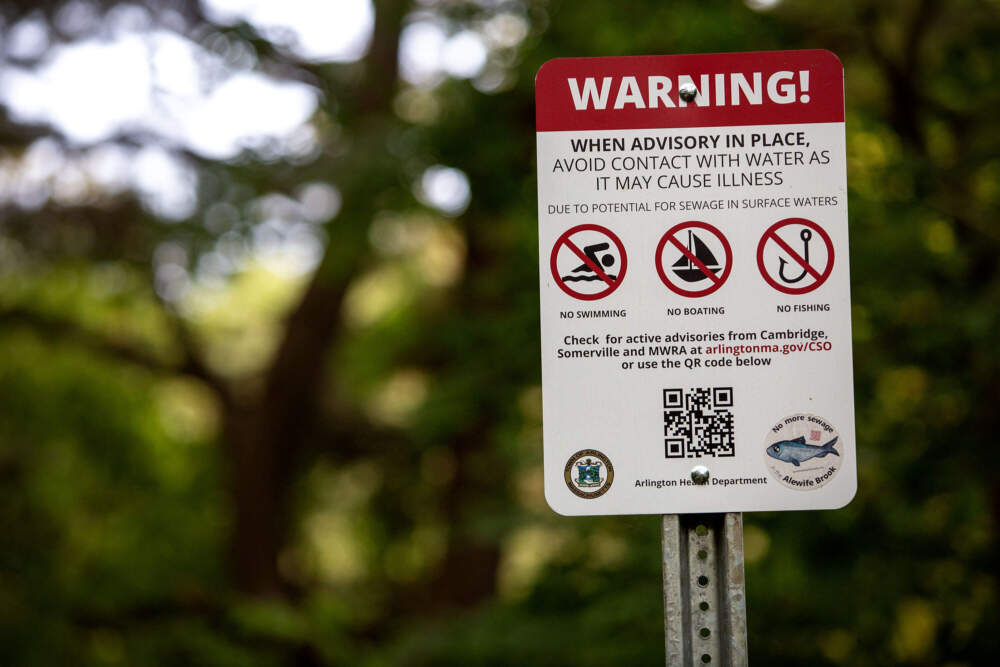
And, even if a city can separate the pipes, Guerin added, it still has to figure out what to do with the rain water.
“With today’s rules on stormwater, it’s not like you can just run the pipe out to the river,” he said. “Now you’ve got to meet water quality standards. You potentially have to treat that stormwater to make sure when it hits the river, it’s not contributing to a pollution problem.”
Plus, there’s the municipal nightmare of shutting down streets, digging up roads and finding ways to maintain residential water and sewer service. In some cases, there may not be space under a street to even build separate stormwater pipes.
While sewer separation is the ultimate fix, there are other engineering options that in some cases, may be cheaper and easier to pull off.
Storage and partial treatment
The first option is to build a huge storage tank to capture water before it overflows through a CSO outfall.
The Massachusetts Water Resources Authority did this in South Boston a little over a decade ago when it built a 2.1 mile-long underground tunnel. The storage tunnel is capable of holding up to 19 million gallons of wastewater and stormwater and slowly releasing it back into the sewer system once the rain stops and the pipes have room.
After the tunnel opened in 2011, the agency was able to close the six CSO outfalls that made the beaches of South Boston notoriously filthy.
This work “is hard and very expensive, but it works for some areas where separation maybe isn’t going to be as effective,” said Betsy Reilley, director of Environmental Quality at the Massachusetts Water Resources Authority.
Of course, there’s not always space to build a storage facility near CSOs, so some cities have turned to a second solution: Partially disinfecting the water before it overflows.
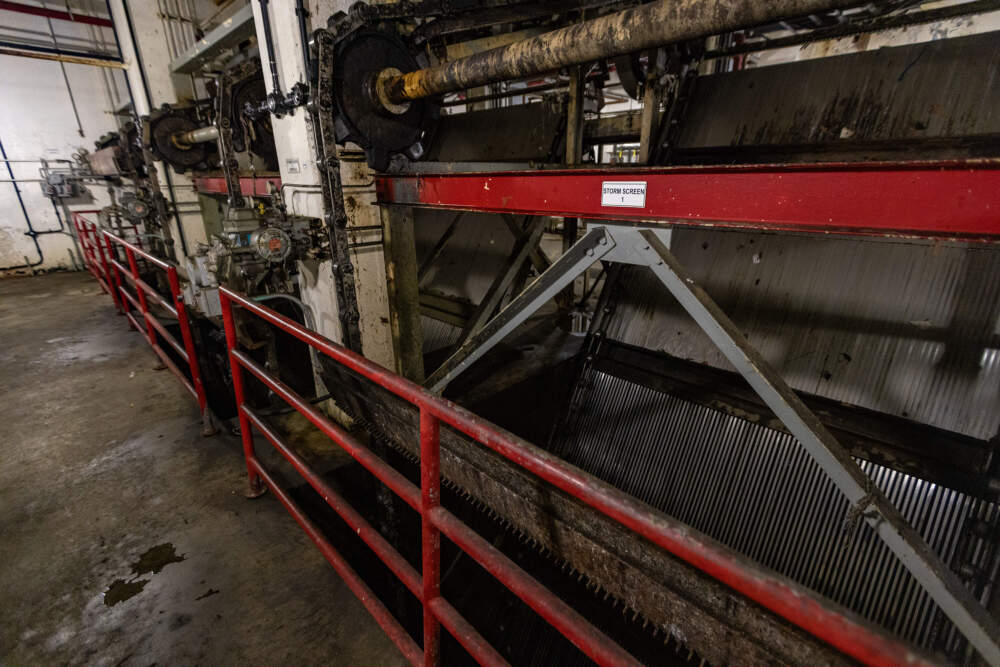
There are several so-called partial treatment facilities in the state, but the largest is the Massachusetts Water Resources Authority’s Prison Point CSO Facility in Cambridge.
During heavy storms, sewage-laden water that would otherwise overflow into the Charles River through five CSO outfalls is redirected to the cavernous facility. First, the solids and floatables are screened out — everything from tampons and condoms to baby wipes, feces that hasn’t broken down and trash that ends up in catch basins on the street.
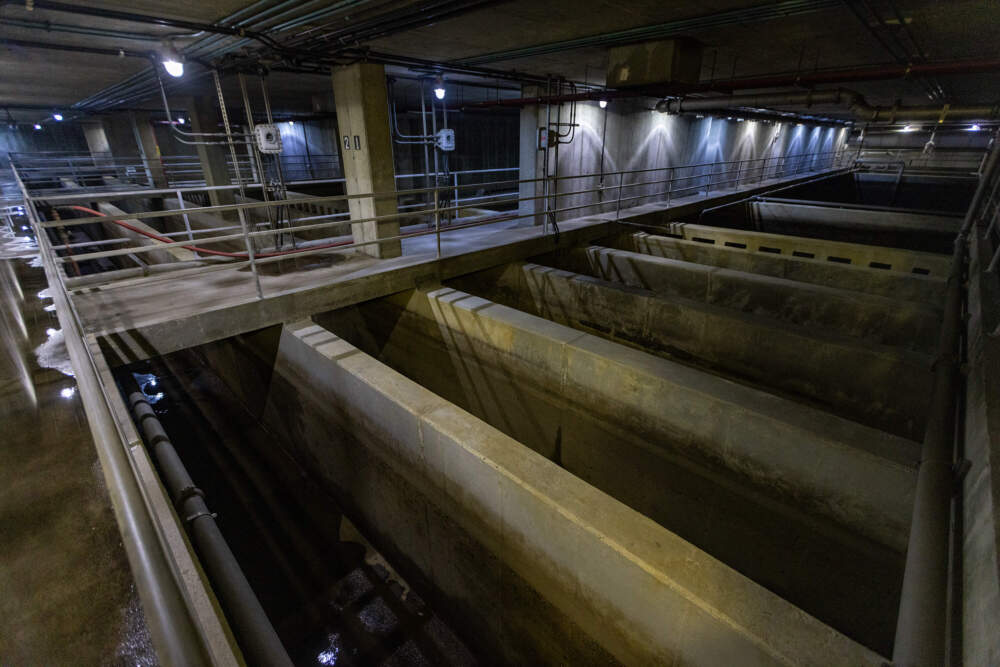
Next, the water is treated with a heavy dose of chlorine and left to sit in six massive concrete storage basins. Then it’s dechlorinated and pumped out into Boston Harbor.
It’s not as clean as it would be had it gone through a full treatment process, but it contains less trash and harmful bacteria.
There is progress, but it’s slow
Through a combination of sewer separation, storage basins and partial treatment plants, Reilley said the number of CSO outfalls and the volume of untreated water in Boston, Cambridge, Chelsea and Somerville have been substantially reduced in recent decades.
In 1987, there were 84 outfalls in these cities that discharged untreated sewage and stormwater into Boston Harbor and the Charles, Mystic and Neponset rivers. Today, about 45 active outfalls remain in these cities and approximately 93% of that water is treated before it’s discharged, Reilley said.
The problem is, she adds, “the most cost effective solutions have already been implemented” and the remaining CSOs “are the ones that are the most difficult to tackle.”
This includes outfalls like the ones in Alewife Brook near David Stoff’s house.
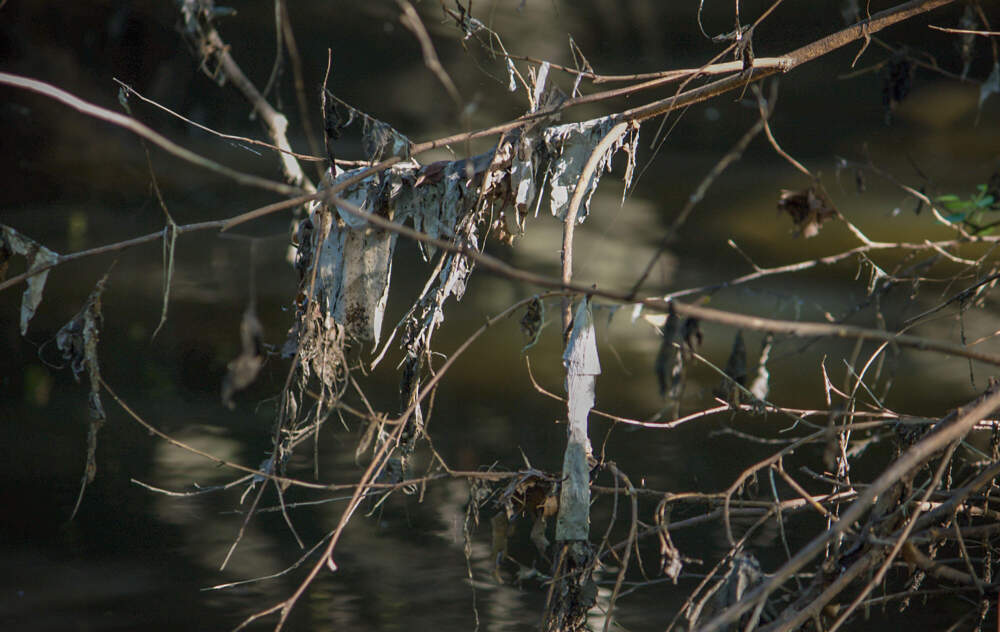
Cities and towns with CSOs across the state are legally required to continue eliminating outfalls and mitigating sewage pollution. But the reality, said Guerin of the Massachusetts Coalition for Water Resources Stewardship, is that there isn’t a ton of federal or state support to pay for the work.
In the 1980s, the federal government offered a lot of grant money to help separate pipes or mitigate CSOs — several sewer separation projects and partial treatment facilities in the state were funded at this time, he said.
But those grants dried up by the 1990s, and the federal and state money that’s available now is predominately in the form of low-interest rate loans.
Guerin said these loans are helpful since most municipalities don’t have hundreds of millions of dollars sitting around to fund big infrastructure projects.
From the perspective of municipal leaders, Guerin said, “you do what you can afford to do, a little bit at a time.” But, he added, at the end of the day, residents still have to foot the bill.
All of which means that barring an influx of cash or new government grants, many communities in the state are likely to have some sewage in the water for years to come.

Massachusetts
What went wrong for Democrats in 2024? Massachusetts party chairman on what needs to change.

Steve Kerrigan, the chairman of the Massachusetts Democratic Party, said his party needs to listen to voters more, because it cost them elections in during the 2024 campaign cycle.
The headline on a Washington Post column last week summed up the identity crisis preoccupying Democrats these days: “LET US COUNT THE 3,515 WAYS IN WHICH DEMOCRATS ARE LAME.”
The piece went on to compile a list of the multitude of advice Democrats are getting, things like “go on the offensive,” “find plausible candidates,” “sound less judgmental,” “rethink the words they use,” “take a ‘specific and granular’ approach,” and “nominate someone who is ‘more mainstream.’”
What are Democrats doing different?
WBZ-TV asked Massachusetts Democratic party chairman Kerrigan what he takes away from it all.
“It’s not surprising to me that that article or those lists come out of Washington,” he said. “The word that matters most to me is win. And if you look at all of the elections that have taken place since November of 2024, Democrats have outperformed and, in many cases, we have flipped seats from Republicans to Democrats in state legislatures all across the country.”
What are they doing differently in from the debacle of the fall of 2024?
“We’re continuing to organize and talk to people where they are and, frankly, listen more, which is what our party, and any party who wishes to win elections needs to do. You have to be willing to talk to the voters and to listen,” says Kerrigan. “What we didn’t do in the wake of 2016 was listen to why a Trump voter existed in the first place, how he got elected in the first place. I really think we fell down on the job. We took data points throughout time, the midterms of ’18, the win in ’20 and the no-red-wave in ’22 and figured out that we had figured it out, when, in fact, we hadn’t.”
What have they figured out now? The Trump voters “feel like they did not have their voice heard,” Kerrigan said.
“We’ve got a Washington, DC [where] the last time they fought for or increased the minimum wage, my former boss, Ted Kennedy led that battle, and he died in August of 2009. You’ve got a Congress that doesn’t pass a budget through regular order since 1997. The American people are frustrated, and they’re showing it by saying ‘You’re in power, we now are going to try the other guy,’ even though they knew what the other guy was up to,” Kerrigan said.
Should Maura Healey re-elected?
On the local front, Kerrigan was asked about recent polling showing only 37% of Massachusetts voters believe Gov. Maura Healey deserves re-election next year. He waved off that results and cited other pols that are more favorable for the incumbent.
“Governor Healey is going to earn re-election because she understands Massachusetts people need someone who’s going to fight to lower costs for them, going to fight to increase housing opportunities for them, going to fight back against Donald Trump. And frankly, neither Mike Kennealy nor Brian Shortsleeve [the two announced GOP candidates for governor] are willing to do any of that,” Kerrigan said.
Kerrigan also discussed the impact President Trump and his policies are likely to have on the campaign here, and gave his reaction to recent reporting on the handling of then-President Joe Biden’s decision to seek re-election.
You can watch the entire conversation here, and join us every Sunday morning at 8:30 a.m. for more discussion with political and policy newsmakers on the weekend edition of “Keller At Large.” Next week’s guest will be Massachusetts GOP chair Amy Carnevale.
Massachusetts
Weather alert issued for heavy rain and flooding in 4 Massachusetts counties until Saturday evening

A report was issued from the National Weather Service on Saturday at 3:19 p.m. for heavy rain and flooding until 6:30 p.m. for Norfolk, Suffolk, Bristol and Plymouth counties.
“A line of Thunderstorms stretching from eastern CT, through northern RI, into Eastern MA will bring heavy rain and street flooding for the next few hours. Rain rates are estimated to be around 1-2 inches per hour with very slow moving storms,” states the weather service.
Navigating rainy roads: Safety tips for wet weather
Heavy rainfall may lead to flooding if prolonged or if there is excessive runoff. Excessive runoff can be a result of saturated ground and/or rainfall intensity. Follow these recommendations from the weather service to stay safe in heavy rain:
Beware of rapid water flow:
- During heavy rain, avoid playing near culverts or drainage ditches, where swift-moving water can pose a serious risk.
Maintain safe driving distances:
- The two-second rule for following distance is your ally in heavy rain. Extend it to four seconds to ensure safe spacing in adverse conditions.
Slow down and drive with care:
- On wet roads, reducing your speed is crucial. Ease off the gas pedal gradually and avoid abrupt braking to prevent skidding.
Choose your lane wisely:
- Stick to the middle lanes to minimize the risk of hydroplaning. Outer lanes are more prone to accumulating water.
Visibility matters:
- Enhance your visibility in heavy rain by turning on your headlights. Watch out for vehicles in blind spots, as rain-smeared windows can obscure them.
Watch out for slippery roads:
- The first half-hour of rain is when roads are slickest due to a mix of rain, grime, and oil. Exercise heightened caution during this period.
Keep a safe distance from large vehicles:
- Large trucks and buses can reduce your visibility with tire spray. Avoid tailgating and pass them swiftly and safely.
Mind your windshield wipers:
Overloaded wiper blades can hinder visibility. If rain severely limits your sight, pull over and wait for conditions to improve. Seek refuge at rest areas or protected spots. When stopping roadside, position your vehicle as far off the road as possible, ideally beyond guardrails. Keep your headlights on and activate emergency flashers to alert other drivers.
In the face of heavy rain, these precautions can make a significant difference in ensuring your safety on the road. Remember to stay informed about weather conditions and heed guidance from local authorities for a secure journey.
Advance Local Weather Alerts is a service provided by United Robots, which uses machine learning to compile the latest data from the National Weather Service.
Navigating rainy roads: Safety tips for wet weather
Heavy rainfall may lead to flooding if prolonged or if there is excessive runoff. Excessive runoff can be a result of saturated ground and/or rainfall intensity. Follow these recommendations from the weather service to stay safe in heavy rain:
Beware of rapid water flow:
- During heavy rain, avoid playing near culverts or drainage ditches, where swift-moving water can pose a serious risk.
Maintain safe driving distances:
- The two-second rule for following distance is your ally in heavy rain. Extend it to four seconds to ensure safe spacing in adverse conditions.
Slow down and drive with care:
- On wet roads, reducing your speed is crucial. Ease off the gas pedal gradually and avoid abrupt braking to prevent skidding.
Choose your lane wisely:
- Stick to the middle lanes to minimize the risk of hydroplaning. Outer lanes are more prone to accumulating water.
Visibility matters:
- Enhance your visibility in heavy rain by turning on your headlights. Watch out for vehicles in blind spots, as rain-smeared windows can obscure them.
Watch out for slippery roads:
- The first half-hour of rain is when roads are slickest due to a mix of rain, grime, and oil. Exercise heightened caution during this period.
Keep a safe distance from large vehicles:
- Large trucks and buses can reduce your visibility with tire spray. Avoid tailgating and pass them swiftly and safely.
Mind your windshield wipers:
Overloaded wiper blades can hinder visibility. If rain severely limits your sight, pull over and wait for conditions to improve. Seek refuge at rest areas or protected spots. When stopping roadside, position your vehicle as far off the road as possible, ideally beyond guardrails. Keep your headlights on and activate emergency flashers to alert other drivers.
In the face of heavy rain, these precautions can make a significant difference in ensuring your safety on the road. Remember to stay informed about weather conditions and heed guidance from local authorities for a secure journey.
Advance Local Weather Alerts is a service provided by United Robots, which uses machine learning to compile the latest data from the National Weather Service.
Massachusetts
Massachusetts grappling with growing problem of impaired driving: ‘100% preventable’

Federal data shows that driving under the influence in Massachusetts is a growing problem.
The number of drivers under the influence of alcohol, drugs or medication at the time of a fatal crash “increased steadily” from 2020 to 2023 in the Bay State, according to AAA Northeast, citing the latest available data from the National Highway Traffic Safety Administration.
Over the four years, the Commonwealth recorded 141 total such incidents, increasing from 17 in 2020 to 55 in 2023, according to data in the Fatality Analysis Reporting System.
Mary Kate DePamphilis, program director for the Massachusetts chapter of Mothers Against Drunk Driving, says that one death is too many because of impaired driving, and fatality numbers “don’t consider the many others who have been injured; some severely.”
Dozens of community members gathered in Franklin on Thursday for a vigil in memory of the state’s most recent victims of impaired driving: 5-year-old girl Krisha Patel and her 38-year-old mother, Minaben Patel.
Suspect James Blanchard, 21, of Franklin, is accused of drinking Tito’s Vodka straight out of a 1.75-liter bottle behind the wheel when he plowed a pickup truck head-on into a sedan driven by Atulkumar Patel, Krisha’s father and Minaben’s husband, the evening of May 24.
“MADD is heartbroken over the Memorial Day crash that happened in Franklin,” DePamphilis told the Herald. “An innocent child and her mother are no longer with us because of someone’s careless decision to drink and drive.
“Impaired driving crashes are 100% preventable,” she added, “which makes this even more tragic.”
Locally, DePamphilis said her organization is working “every day to prevent these senseless deaths” in partnership with law enforcement, by providing education in schools for children and parents, while “working on strengthening impaired driving legislation.”
Mothers Against Drunk Driving is also “working diligently” to advocate for the federal HALT Act, legislation that would mandate impaired driving prevention technology in all new cars, DePamphilis said.
Reducing the number of impaired driving incidents in the Bay State is also the mission of traffic safety grants awarded through the state Office of Grants and Research. This fiscal year, the program issued more than $12 million in federal funding to nonprofits, municipal police and state agencies to bolster safety for all users of the road.
Data provided to the Herald shows that the Massachusetts State Police conducted 26 sobriety checkpoints and 40 saturation patrols between December 2023 and September 2024, totaling 7,187 hours of enforcement activity and issuing over 11,000 citations and written warnings to drivers.
“Every day, we serve victims of impaired driving, free of charge,” DePamphilis said of Mothers Against Drunk Driving. “We are there for families in their darkest days to help navigate through grief and the criminal justice system, eventually getting to a place in their healing journey where they can cope. I urge anyone who has been a victim of impaired driving to reach out to 1-800-MADD-HELP.”
-

 News1 week ago
News1 week agoVideo: Faizan Zaki Wins Spelling Bee
-

 Politics1 week ago
Politics1 week agoMichelle Obama facing backlash over claim about women's reproductive health
-

 Technology1 week ago
Technology1 week agoOpenAI wants ChatGPT to be a ‘super assistant’ for every part of your life
-

 Technology1 week ago
Technology1 week agoSEC drops Binance lawsuit in yet another gift to crypto
-

 Movie Reviews1 week ago
Movie Reviews1 week agoThe Verdict Movie Review: When manipulation meets its match
-

 Technology1 week ago
Technology1 week agoWhy do SpaceX rockets keep exploding?
-

 World1 week ago
World1 week agoTwo killed in Russian attacks on Ukraine before possible talks in Turkiye
-

 News1 week ago
News1 week agoOil companies face a wrongful death suit tied to climate change












